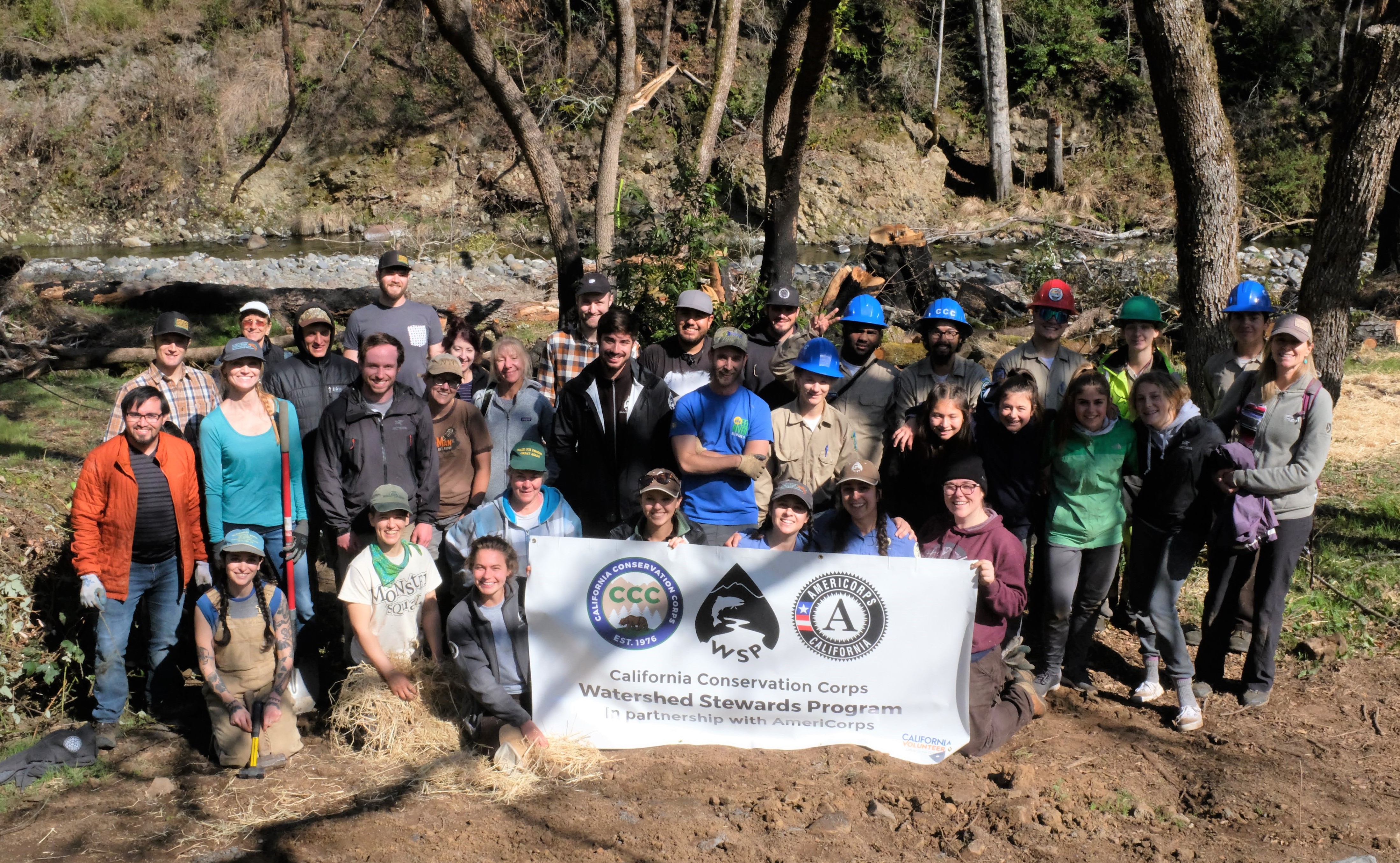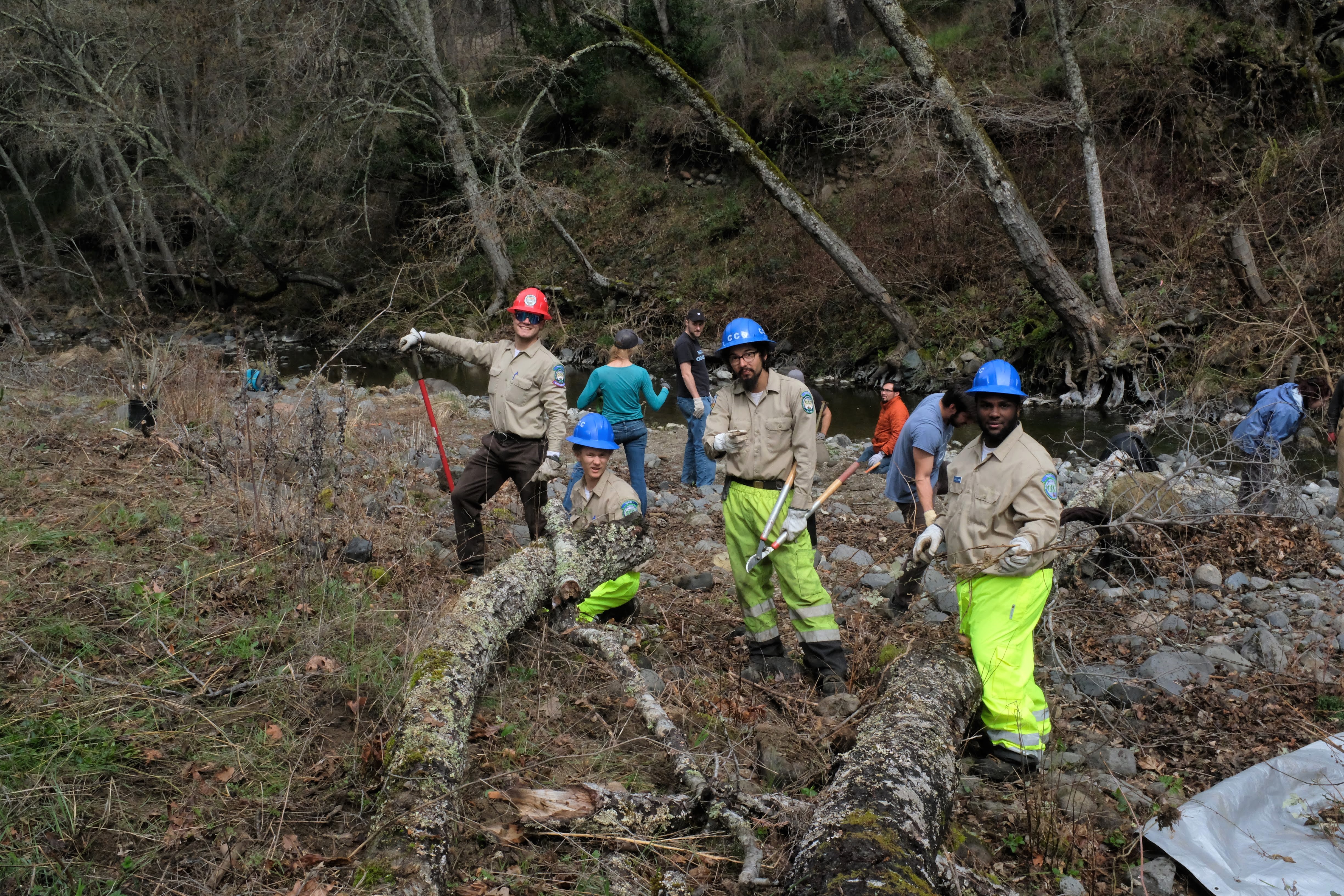By Shayda Abidi and Adriene Chenette, Watershed Stewards Program
April 2, 2020
In October 2017, two of the most destructive wildfires ever to hit California sparked in the heart of wine country. The Tubbs and Nuns fires burned their way through Sonoma County at incredible speeds. By the time they were fully contained, the fires had burned more than 93,000 acres and 8,400 structures. Not only was the devastation to human communities immense, but a vast amount of critical habitat for fish and wildlife was also destroyed. Nearly 30% of the Laguna-Mark West Creek watershed burned, including important riparian buffers.
Riparian buffers are vegetated areas along streams that offer important services, like providing habitat for native plants and animals and acting as corridors for various migratory species. The roots of riparian plants create cover for fish, stabilize stream banks and reduce erosion, while the tree canopy reduces water temperatures and provides nutrient inputs for organisms in the stream channel. Loss of riparian vegetation can have significant detrimental effects on watershed health, and the huge amount lost in the fires made the Mark West watershed far more vulnerable to erosion. Although sediment input is a natural and important function, sudden, large increases in sediment runoff can prove harmful to native species that rely on clean water and complex stream habitat.
Salmonids native to Mark West Creek include threatened steelhead trout and Chinook salmon, and endangered coho salmon. These fish thrive in the clear, cold waters of well-shaded streams with complex habitat, plenty of cover from predation, and low amounts of fine sediment. They make their nests (redds) in streambed gravels, and if there is too much fine sediment in the gravels it will prevent oxygen from reaching the eggs, causing mortality. Sediment also reduces habitat complexity by filling in pools.
As Watershed Stewards Program (WSP) members with the California Sea Grant Russian River Salmon & Steelhead Monitoring Program in Windsor, we took the opportunity to spring into action. WSP was founded by the California Department of Fish and Wildlife, California Conservation Corps, and AmeriCorps in 1994 to help save dwindling populations of salmon and steelhead throughout California. WSP members are placed with organizations from the Klamath River south to the Santa Monica Mountains with one mission in mind: to conserve, restore, and enhance anadromous watersheds for future generations by linking education with science.
We saw firsthand the damage done to riparian buffers by the Tubbs fire as we monitored our local tributaries. It was time to design a Watershed Awareness Project—a volunteer-based restoration event conducted by WSP members in their local communities—to restore vital salmon habitat and make a difference in our home watershed.

Group Photo - Watershed Stewards Program
We connected with Friends of the Mark West Watershed (FMWW), a non-profit that has been integral in the restoration and preservation of the Mark West watershed since 2003. FMWW organizes community outreach, education, and volunteer restoration work. A perfect fit for our mission! FMWW connected us with Lynn Garric, a landowner who lost her home to the fire on her property, Atta Girl Acres, which borders a long stretch of Mark West Creek.
As we walked through Atta Girl Acres, we saw scars from the fire everywhere. Oak trees were charred or lay dead, with large patches of bare soil forming mudslides. The riparian zone was also burnt, leaving parts of the creek heavily exposed to the sun. The area was now overgrown with non-native, invasive vegetation; often quick successors after fires. Our objective was clear—to improve the riparian zone by removing invasive vegetation and planting native species to help re-establish healthy canopy cover, reduce erosion, and provide shaded habitat for salmonids. We quickly got to work on planning and promoting our big restoration event.

California Conservation Corps members from Ukiah removing invasive plants with style.
On March 7th, 2020 our big day finally came. Despite the rainy morning, 57 enthusiastic volunteers came out to support their local creek! Volunteers pulled large swaths of Himalayan blackberry and other invasive plants. Smiling despite the rain and hard work, they staked willow, planted and irrigated a variety of native trees, and mulched the bare ground to reduce erosion. In total, more than 46,000 square feet of streamside land was restored in just a few hours!
Today, as we all isolate due to the COVID-19 pandemic, we find ourselves longing for the richness of community more than ever and appreciate what bringing people together with a positive intention can achieve, even at small restoration events like this one.
WSP is administered by CaliforniaVolunteers and sponsored by the Corporation for National and Community Service and the California Department of Fish and Wildlife
Video by Timmy Lodhi
